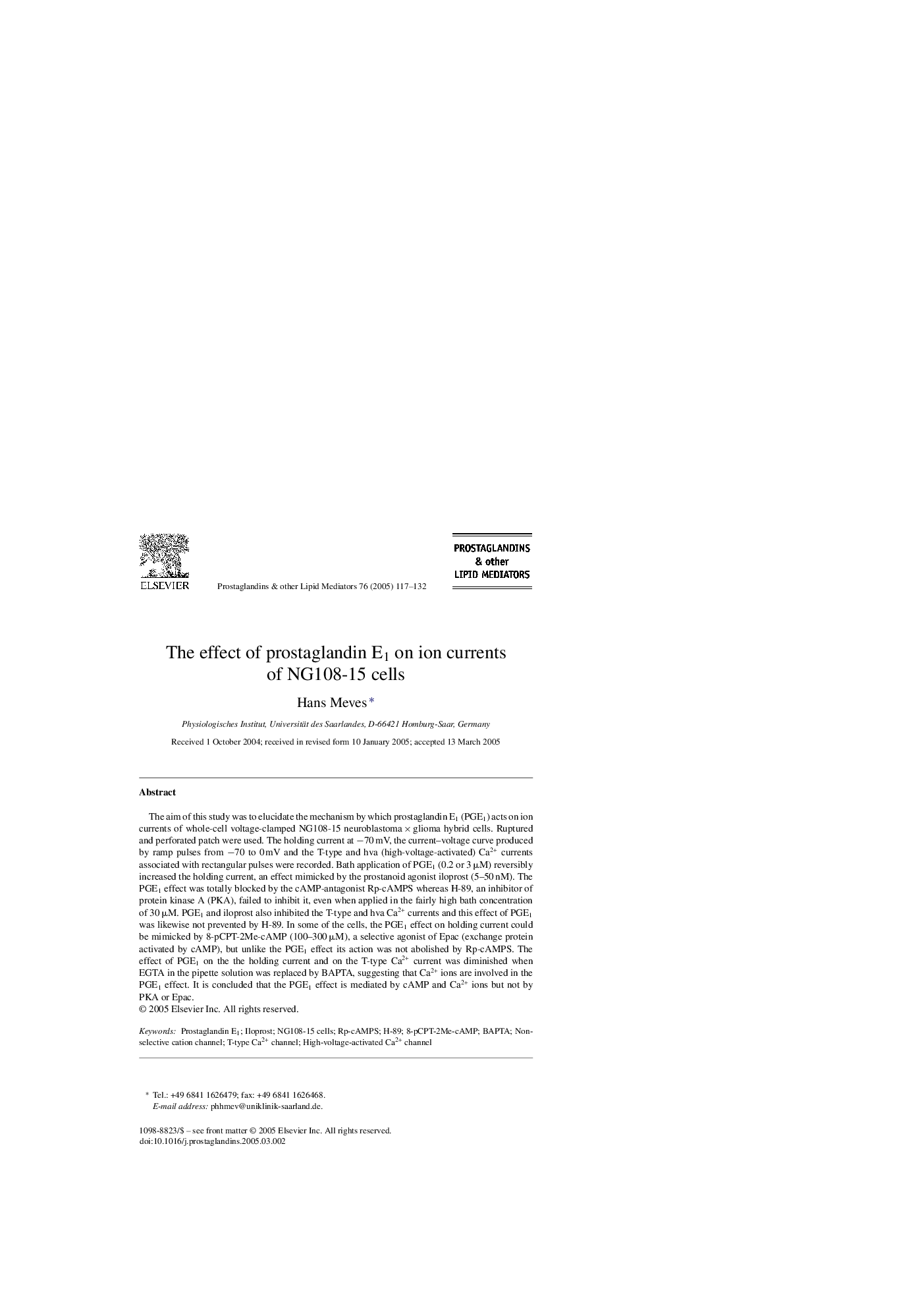| Article ID | Journal | Published Year | Pages | File Type |
|---|---|---|---|---|
| 9894085 | Prostaglandins & Other Lipid Mediators | 2005 | 16 Pages |
Abstract
The aim of this study was to elucidate the mechanism by which prostaglandin E1 (PGE1) acts on ion currents of whole-cell voltage-clamped NG108-15 neuroblastoma Ã glioma hybrid cells. Ruptured and perforated patch were used. The holding current at â70 mV, the current-voltage curve produced by ramp pulses from â70 to 0 mV and the T-type and hva (high-voltage-activated) Ca2+ currents associated with rectangular pulses were recorded. Bath application of PGE1 (0.2 or 3 μM) reversibly increased the holding current, an effect mimicked by the prostanoid agonist iloprost (5-50 nM). The PGE1 effect was totally blocked by the cAMP-antagonist Rp-cAMPS whereas H-89, an inhibitor of protein kinase A (PKA), failed to inhibit it, even when applied in the fairly high bath concentration of 30 μM. PGE1 and iloprost also inhibited the T-type and hva Ca2+ currents and this effect of PGE1 was likewise not prevented by H-89. In some of the cells, the PGE1 effect on holding current could be mimicked by 8-pCPT-2Me-cAMP (100-300 μM), a selective agonist of Epac (exchange protein activated by cAMP), but unlike the PGE1 effect its action was not abolished by Rp-cAMPS. The effect of PGE1 on the the holding current and on the T-type Ca2+ current was diminished when EGTA in the pipette solution was replaced by BAPTA, suggesting that Ca2+ ions are involved in the PGE1 effect. It is concluded that the PGE1 effect is mediated by cAMP and Ca2+ ions but not by PKA or Epac.
Keywords
Related Topics
Life Sciences
Biochemistry, Genetics and Molecular Biology
Biochemistry
Authors
Hans Meves,
